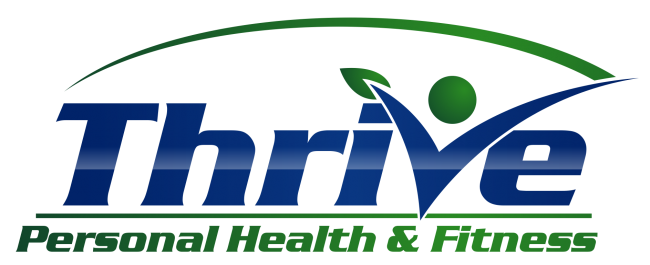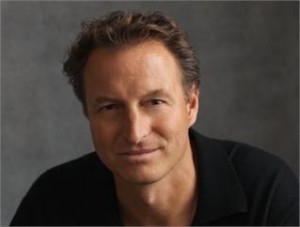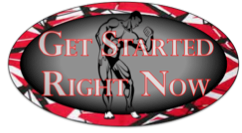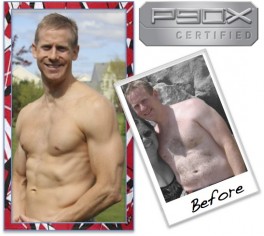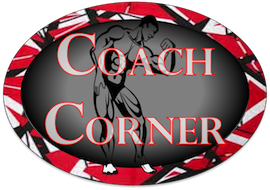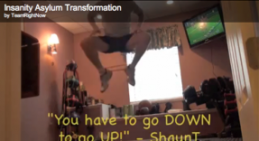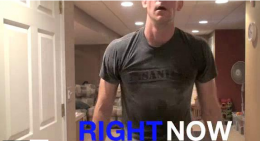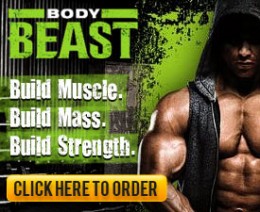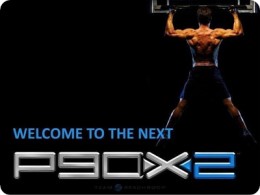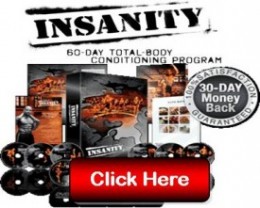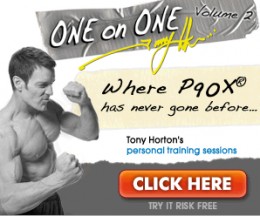The Brains Behind P90x
April 7, 2011 –
I love being a coach so much because I love success stories. Everyone who does these programs is a success story. Everyone has different struggles and obstacles that they had to overcome to get to where they are today.
Below is the story behind how Beachbody was created and how Carl Daikeler and Jon Congdon created the company. It makes me happy to know I just tried out Power 90, the original that started the ever growing army of people who are getting healthy and fit through their programs.
This is a great read and makes me proud to be a part of the company.
You can also see the source article by clicking here
+++++++++++++++++++++++++++++++++++++++++++++++++++++++++++++++
Sports Business: The Brains Behind BeachBody’s P90X
Maybe you saw the infomercial one night watching TV. Or maybe it was an ad on the radio. A friend might even have told you about it. Regardless of how you did, there’s a good chance you’ve heard about P90X, the 90-day home exercise program that’s designed to “confuse” your muscles through cross-training and switching up exercises. It seems that anyone who uses the program — which has been bought by some 3 million people since it made its debut as Power 90 back in 2001 — often becomes a walking advertisement for it, a fanatic even, as friends and co-workers invariably ask, “Have you been working out?”
Americans love their home workout routines — especially when they see them on TV. It’s a trend that stretches back to perhaps the now late Jack LaLanne, who taught exercise and fitness to millions in the 1950s with his TV show that ran for an astounding 34 years. There is perhaps some irony in the fact that as Americans as a whole have put on weight, they have simultaneously poured billions of dollars into buying home exercise programs championed by the likes of Jane Fonda, Suzanne Somers and Billy Blanks. In other words, the home workout market remains a huge market for entrepreneurs to tap into.
While the face of P90X may be Tony Horton, the exceptionally fit trainer featured in the videos and the infomercials that have been steadily broadcast on late night TV for the past 10 years, the marketing brains come from within the Beachbody walls. Carl Daikeler and Jon Congdon were already veterans of marketing products on television for the home fitness market when they partnered up in 1998 to found Beachbody, the marketing and production company behind P90X, Insanity, Turbo Fire, Slim in 6, Hip Hop Abs, and numerous other programs.
But Beachbody wasn’t an overnight success. Their first product was called Great Abs Guaranteed, which built upon the success of its predecessor, 8-Minute Abs, which Daikeler had created for a former business in which he was a partner. While that program was moderately successful (and is still available for sale today), Daikeler and Congdon continued to do marketing consulting for other companies. “We needed to make extra money doing consulting to keep the lights on and to pay our employees while we developed more products,” Congdon says. At the same time, Daikeler and Congdon thought there was a market for more of a full body workout routine that would also incorporate healthy eating and nutrition. So, in 2000, they began working out in a spare bedroom of Horton’s, who had been featured in their Great Abs Guaranteed commercials, to develop such a program.
The result of those efforts was called Power 90, named for the fact that the program’s set of four alternating workout routines lasted for 90 days. Within weeks of the debut of its first infomercial, which featured before-and-after photos of Congdon, Daikeler and others, Beachbody sales skyrocketed — which both drove annual sales to $33 million and allowed Daikeler and Congdon, who respectively own the titles CEO and president, to devote themselves full-time to running Beachbody. “People thought we were idiots because the commercial showed people sweating rather than taking a pill,” says Congdon. “But we thought there was a niche for people who wanted to work hard to lose weight and get fit. And we showed real people doing that. The No. 1 thing people told us when they called us up to buy it was, ‘I’ve never bought anything I’ve seen on TV before. But I could tell this was real.’”
Commercials for P90X — which is simply short for Power 90 Extreme — debuted in 2006 as a successor to the Power 90 program, but with more workouts built into it. And, as with the original, the half-hour infomercial featured before and after shots of Congdon, who has served as one of Horton’s guinea pigs in developing the program, which now earns some $191 million a year for Beachbody (or nearly half of the company’s total revenues of $430 million — all from selling direct to consumers over the phone or through the company’s website.) But Beachbody has used a similar marketing strategy — get real people to work out in an infomercial for a half hour — to launch a bevy of other products that includes Insanity, Brazil Butt Lift, and Hip Hop Abs. “There really is no format that compares to long-format commercials — what most people call infomercials–for building an obscure brand into a multi-million-dollar product line very quickly,” says Congdon, adding that they have shied away from selling through big-box retailers principally because they didn’t want to lose control of how P90X was priced.
That makes it all the more impressive, then, that Congdon says that more than half of the customers who purchase the product these days say they’ve never even seen the TV commercial. Instead, they’ve learned about it from their friends and co-workers. “The word-of-mouth appeal of the program has been unbelievable,” he says. “I know it’s the most comprehensive program I’ve ever done and everyone who does it feels great.” That’s a sentiment that Daikeler and Congdon tapped into when they launched Team Beachbody, a direct sales or network marketing program — think Mary Kay Cosmetics or Tupperware — where fans of the product get a commission when their friends and acquaintances buy P90X for themselves. Started in 2007, the program now has some 50,000 “coaches” who have combined their passion for the product with an entrepreneurial spirit to earn extra money for themselves. “It’s amazing to see the size of the community that believes in our products,” says Congdon. “People want to become coaches just so they can help the people around them feel fit and healthy.”
Team Beachbody has also become the foundation for a recent Beachbody product launch: Shakeology, which is a nutritional shake system that is only sold through those coaches affiliated with the company. It, too, has already become a huge hit as, according to Congdon, sales have already topped $1 million a week.
“I think once they reach a certain milestone, many entrepreneurs lose focus,” says Congdon. “We know how to create products and how to build commercials around what we want to say about them. We continue to be successful at Beachbody because we stick to doing what we’re good at.”
Photo of Jon Congdon courtesy of BeachBody
